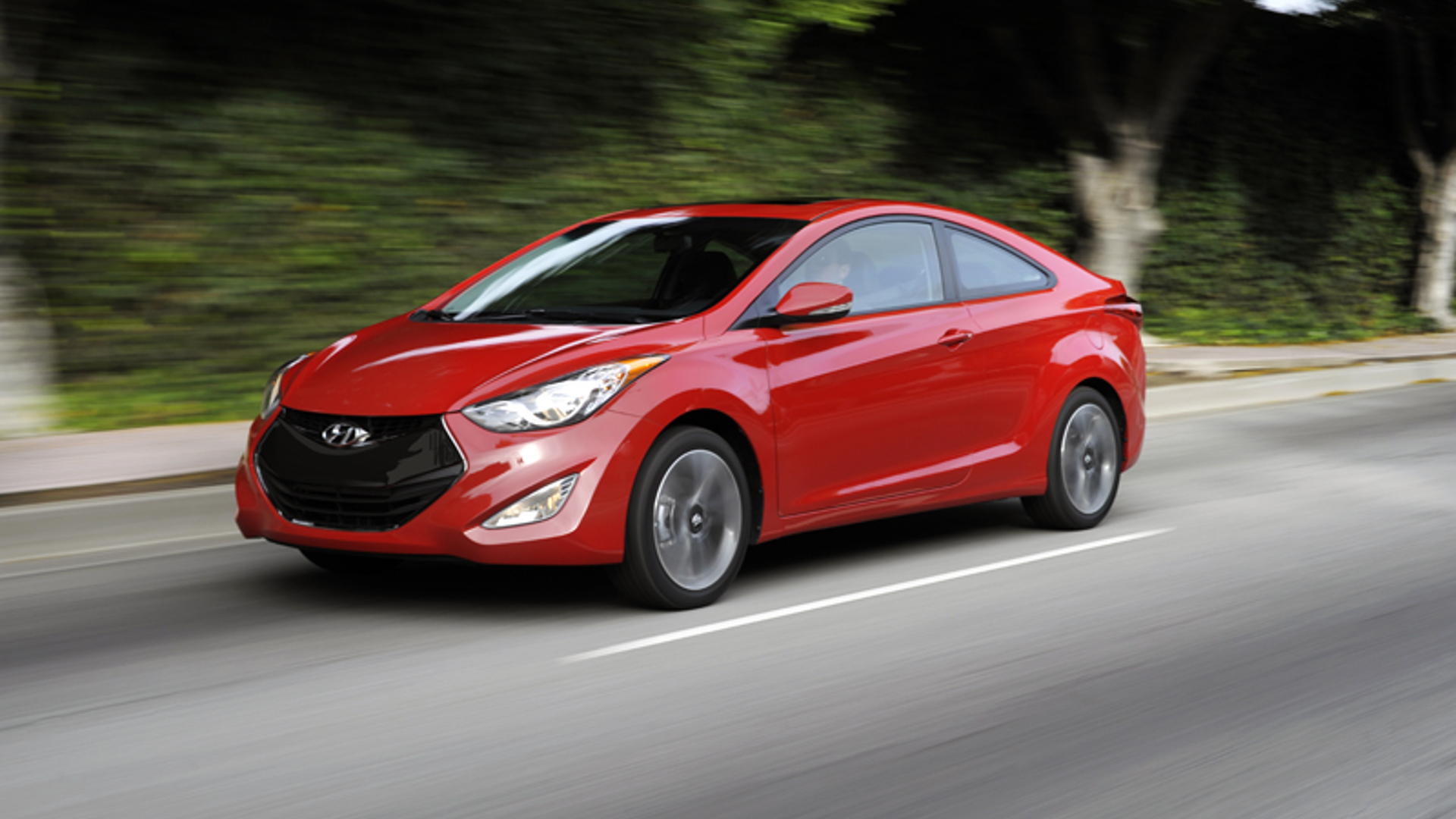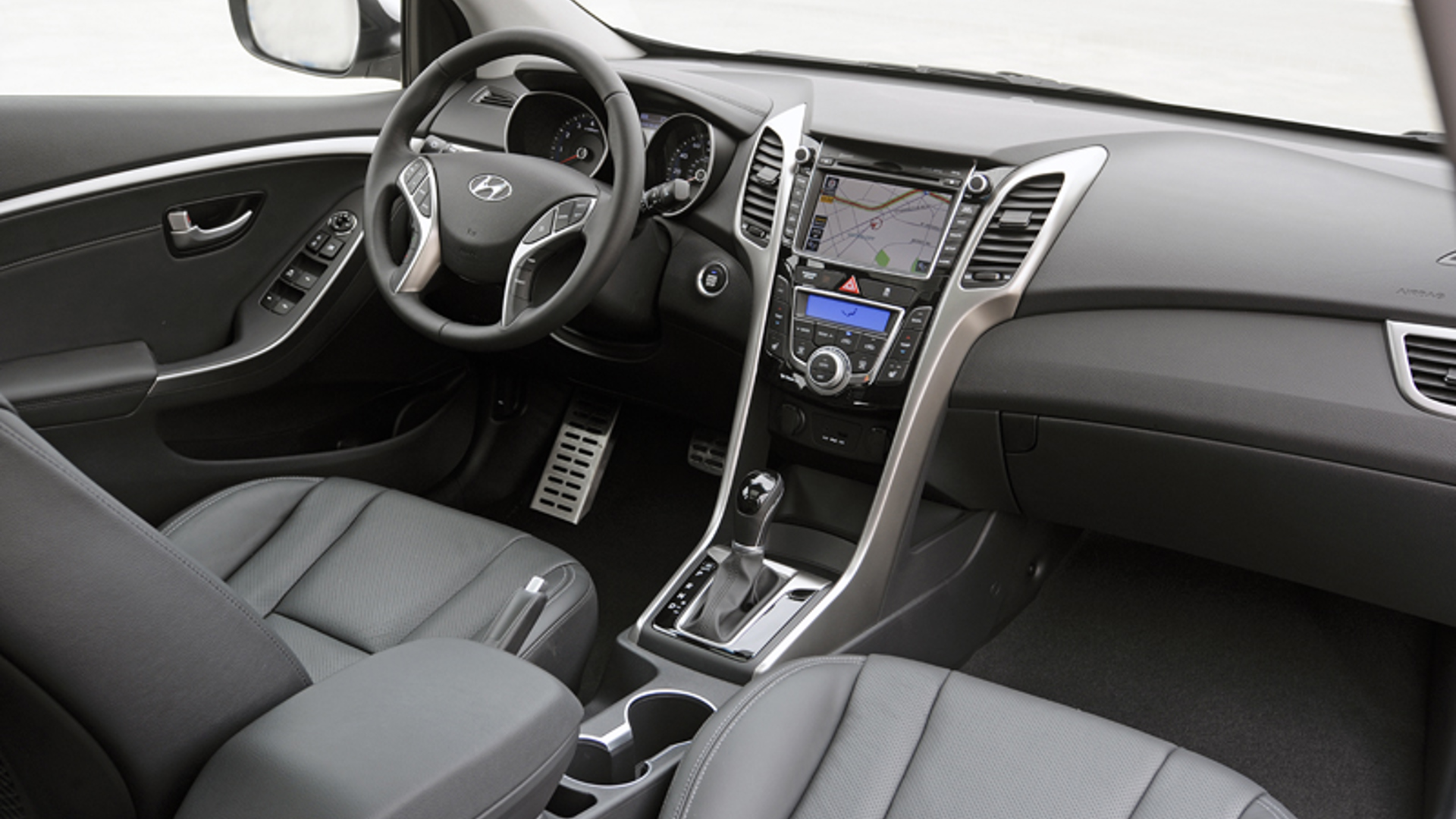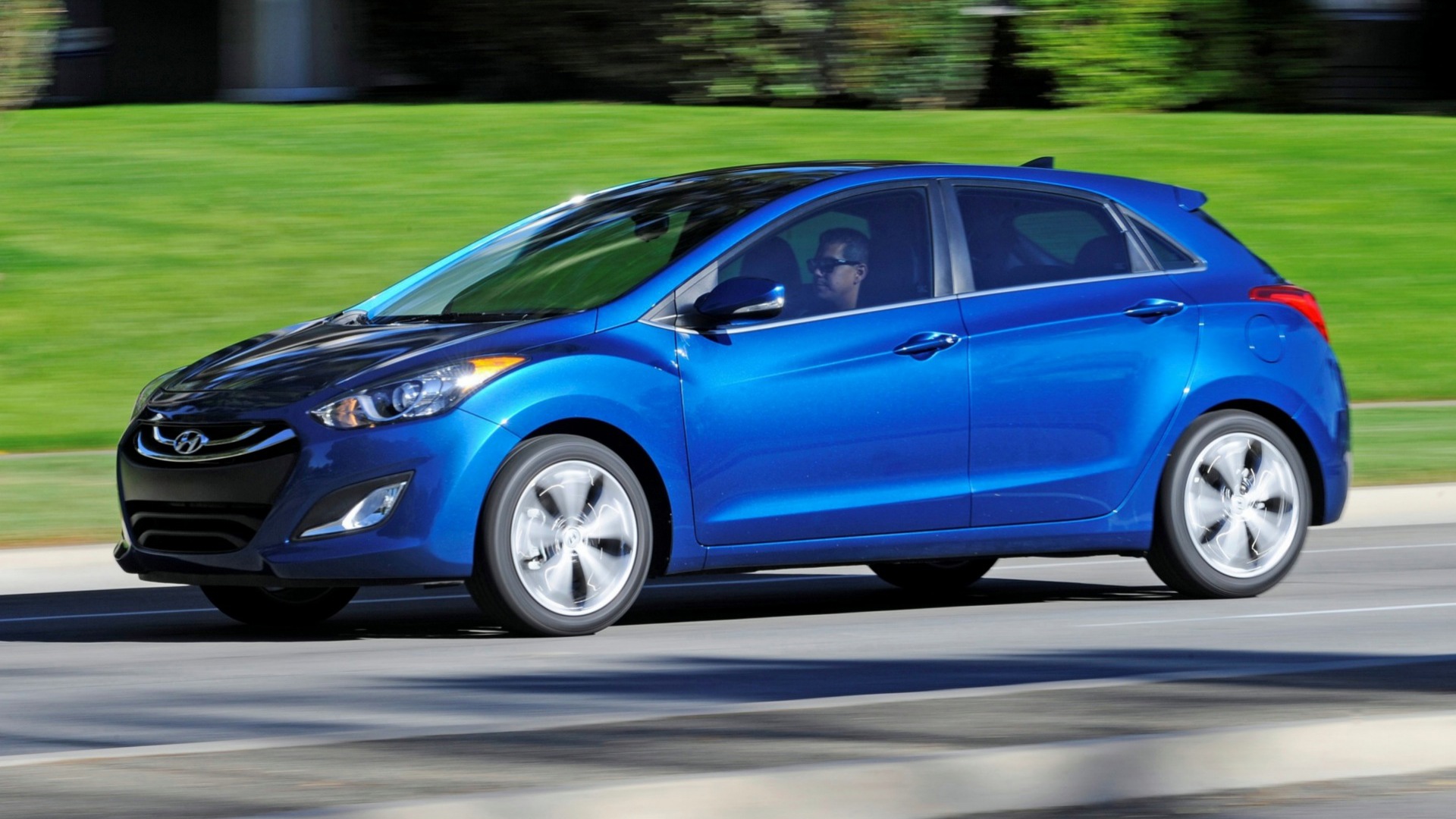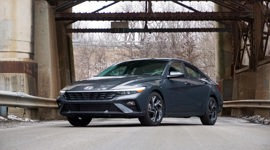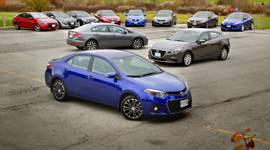Vehicle Type: Compact Car
The Elantra has a blend of higher-than-average feature content and lower-than-average pricing that make it a compelling buy, both new and used.
History/Description: On my advice, my mother bought a 2011 Hyundai Elantra. It was that, or a Honda Civic, and the logic was simple: for the money she wanted to spend, she’d have an older, higher-mileage and more basically-equipped Civic, short a safety feature I wanted her to have: ESC.
As it was with my mom’s new-to-her ride, the Elantra has a blend of higher-than-average feature content and lower-than-average pricing that make it a compelling buy, both new and used.
This generation Elantra launched for model-year 2011, and was a success. Among a number of accolades, it was the first compact car in almost ever to get within just 200 units sold of the Honda Civic in a given month.
Feature content included Bluetooth, heated leather, a sunroof, steering-wheel audio controls, auto-off lights and plenty more, depending on the model selected.
Engines/Trim: At launch of this generation Elantra, all models were four-door, four-cylinder and front-wheel drive.
A coupe and hatchback Elantra GT variant became available too. All units got a 1.8L four-cylinder engine, good for 148 hp at launch, though a 2014 update saw a 2.0L unit with direct injection become standard kit, bumping power into the 170’s. All transmissions were six-speed units, with manual or automatic available, depending on driver preferences.
What Owners Like: Owners commonly praise the Elantra’s looks, ride quality, a robust and durable feel from the suspension, decent mileage, peppy performance and a nicely laid-out interior. Typically, good safety scores and high standard equipment levels attracted shoppers to the Elantra, with highly reasonable pricing sealing the deal.
What Owners Dislike: Typical gripes centre around an engine that’s noisy when pushed, limited rearview visibility on account of the Elantra’s low roofline, and limited headroom on models with the sunroof. Some drivers also complain of poor high-beam performance, and here’s a little write up on how to fix it, if you’re a do-it-yourselfy sort of gal or fella.
Here’s a look some owner reviews.
The Test Drive: Filtering through countless pages of reported issues and weeding out ones that could have been, or were, caused by poor maintenance was a particular challenge in this write up.
Here’s my assessment.
Test drivers are advised to check all four tires for signs of excessive wear, and interestingly, sidewall bubbling, on any used Elantra they’re considering, as many owners have reported durability concerns from factory tires, though this can be attributed, at least partially, to locale and maintenance. When checking for sidewall bubbles, which compromise the integrity of your tire and can negatively impact safety, remember that tires have an inner sidewall, which could be damaged, too.
Pay attention the Elantra’s idle, especially with the air conditioning turned on and the gear selector in DRIVE, with your foot on the brake. Numerous owners, including a few hundred in this thread, have reported higher-than-normal levels of vibration and roughness from an idling Elantra engine. The solution seems to be some combination of software update and / or a new oil control valve in the engine. If the Elantra you’re considering is still under warranty and you notice this issue, be sure to have a dealer service advisor document it, which could make future warranty claims easier, if required.
This discussion talks about non-functionality of electrical components like interior lighting, cluster lighting, the radio, and the remote access system. The cause, apparently, is likely improper jump-starting of the Elantra, which could cause electrical component damage, or failure to follow proper procedures when changing the battery. Elantra’s main electrical distribution panel can be on the fussy side, so if you need to boost your Elantra, or change its battery, be sure to check the owner’s manual first. Further, if your potential used Elantra candidate exhibits any of the aforementioned electrical issues, be sure to determine why.
If equipped, confirm proper operation of the sunroof, ensuring it opens and closes as expected, and seals closed properly, several times on the course of your test drive. Numerous owners have reported that keeping the tracks and glides clean and lubricated is an important step towards prolonged life of the sunroof motor, and that any failure of the sunroof to respond favorably could be caused by excessive strain on the motor, which will require a reset.
As has been reported in other recent Hyundai models, a wonky Transmission Fluid Temperature Sensor can provide false information to the transmission computer, which may result in hard shifting and clumsy transmission performance. Here’s some more information. If the automatic transmission in the Elantra you’re considering exhibits roughness, this is a starting point only. Be sure to determine the cause of any hard shifting before your purchase, ensuring the cause isn’t’ a more expensive (but less likely) transmission defect, for instance.
Other checks are fairly standard. Be sure to give the interior and body a full going-over in search of peeling paint or finish, abnormal wear to carpeting and seats / bolsters, and the colored trim pieces that accent the cabin. As a final note, for maximum peace of mind, higher-mileage units should be subjected to a full tune-up and fluid change if their service history is unknown, and even despite the Elantra’s ‘fill for life’ transmission fluid specification.
The Verdict: At this point, common issues with a used Elantra model should be easily detected and addressed with a quick going-over by a Hyundai mechanic. Finding a good deal on a used unit with remaining warranty should be relatively easy, and is ideal for maximum peace of mind.
Just 2 recalls.

